
Economy of Australia
Australia has a prosperous, Western-style market economy.
The Australian economy is dominated by its services sector (68% of GDP), yet it is the agricultural and mining sectors (8% of GDP combined) that account for 65% of its exports. Rich in natural resources, Australia is a major exporter of agricultural products, particularly grains and wool, and minerals, including various metals, coal, and natural gas.
Australia’s small business sector is vital to the economy, accounting for 58 per cent of employment growth over the past six years and generating about 30 per cent of Australia’s economic production. There are more than 1.2 million small businesses in Australia employing almost 3.3 million people. Over the past decade, the number of small businesses has grown by an average 3.5 per cent every year.
Main facts about Australia’s traditional industries
1. Australia is one of the world’s largest exporters of beef. The value of Australia’s beef and veal (телятина) exports totalled $3.8 billion in 2003–04.
2. Australia is the world’s third-largest exporter of dairy products (молочные продукты). In 2003–04 Australia’s exports of dairy products were valued at $2.2 billion.
3. Australia is the world’s largest wool producer and exporter. In 2003–04 Australia’s shorn wool production was 475 000 tonnes and wool exports were valued at nearly $2.8 billion.
4. The major grains and oilseeds (масличные культуры) produced in Australia include wheat, barley, canola, oats and sorghum. Australia is the world’s second-largest wheat exporter and exported 15.2 million tonnes of wheat in 2003–04.
5. Australia’s key cotton export markets include China, Japan, the Republic of Korea and Thailand. Australia’s raw cotton exports in 2003–04 were valued at just under $1 billion.
6. Sugar is one of Australia’s major exported crops with exports of around 4 million tonnes in 2003–04, worth around $1 billion.
7. In 2003–04 the gross value of horticulture production (садоводство) was around $6 billion. Major horticultural products include fruits and nuts, vegetables, table grapes, dried vine fruits and nursery products (рассада).
8. Australian fisheries (рыбный промысел) operate in one of the world’s cleanest environments. Seafood production in 2003–04 was around 267 000 tonnes, valued at about $2.1 billion.
9. In 2000–01 the value of turnover of Australia’s forest products was about $15 billion. Australia’s native forest area is around 163 million hectares and around 13 per cent of this is classified as conservation reserve.
10. The Australian food industry had an annual turnover of over $65 billion in 2002–03 and accounted for 46 per cent of total retailing turnover in that year.
Mining
Australia has become one of the world's major mining countries. It ranks first in the production of bauxite (боксит, алюминиевая руда), diamonds, and lead (свинец), and is a leading producer of coal, copper, gold, iron ore, manganese (марганец), nickel, silver, tin (олово), titanium (титан), tungsten (вольфрам), zinc, and zircon (циркон).
Australia, classical Opal country
Almost 95 per cent of all of the world's high-quality opals are mined in Australia. The remaining five per cent are mined in Mexico, and in Brazil’s north, also in the US states of Idaho and Nevada.
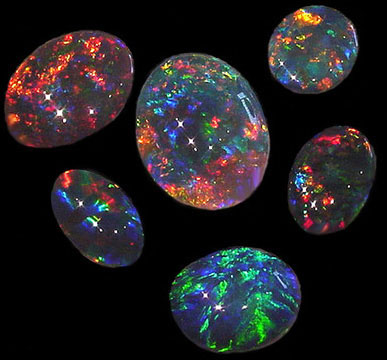
Coober Pedy
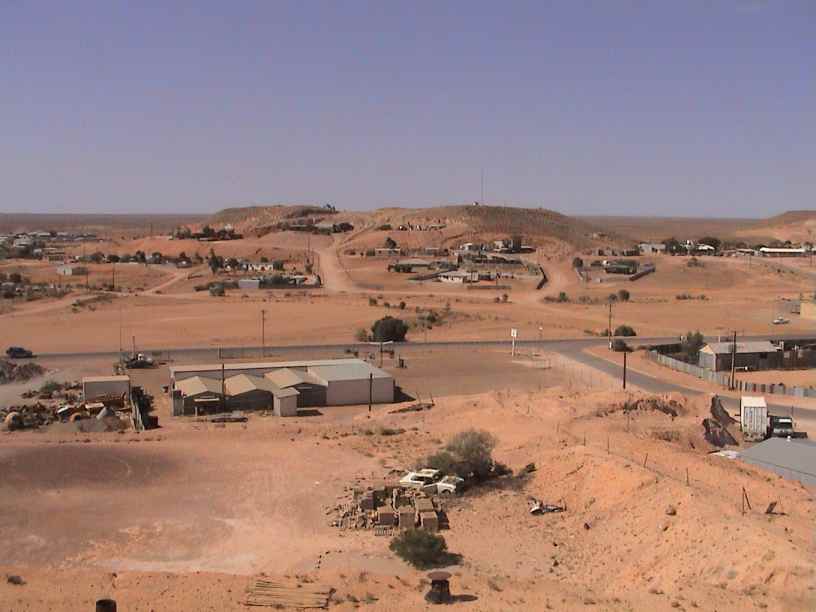
Coober Pedy, population 3,500, is a small town in South Australia, 846 kilometres north of Adelaide.
The town is known as the opal capital of the world because the most precious opals are mined there. The name 'Coober Pedy' comes from the local Aboriginal term kupa piti, meaning "white man in a hole".
The harsh summer temperatures and the dominant industry mean that most residents live in caves bored into the hillsides and work underground in mine shafts. A standard three bedroom cave home can be drilled out of the rock in the hillside for a similar price to a house on the surface.
It remains at a constant temperature whereas surface living needs air-conditioning, especially in the summer months when the temperature can exceed 40 degrees Celsius.
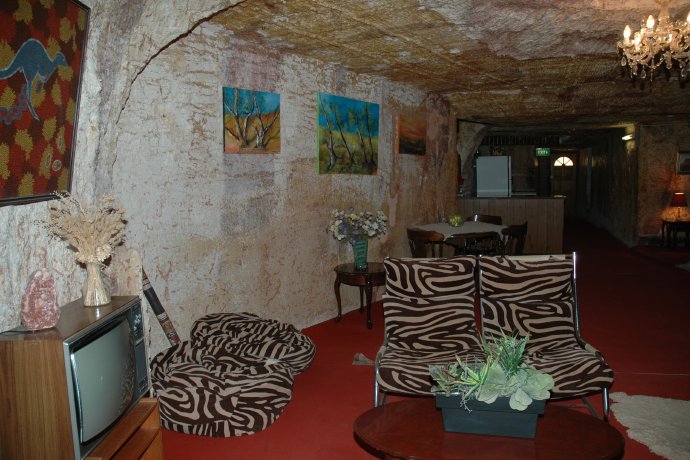
Inside an underground home
Some of the interesting attractions in Coober Pedy include the mines, the graveyard and the underground churches.
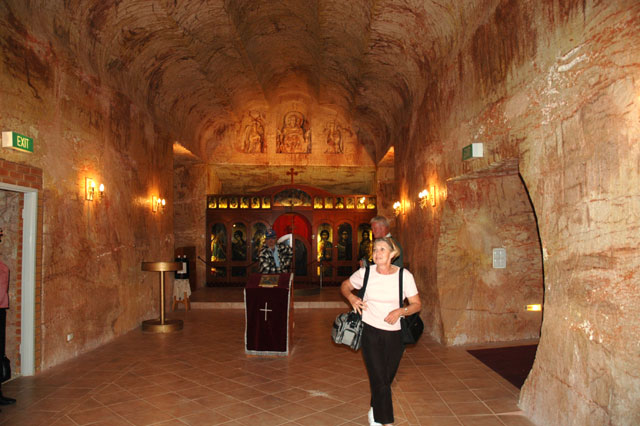
The first tree ever seen in the town was welded together (сварено) from scrap iron. It still sits on a hilltop overlooking the town. The local golf course is completely free of grass.
Opal was first found in Coober Pedy on the 1st of February 1915 and since then has been supplying the world with the majority of gem quality opal. Coober Pedy today relies as much on tourism as the opal mining industry to provide the community with employment and sustainability.
Coober Pedy has evolved in to one of the most unique places in Australia and perhaps the world. It is a cosmopolitan town with a population of 3,500 and over 45 different nationalities. Coober Pedy is probably best known for its unique style of underground living. There is a range of underground accommodation. There are underground homes as well as underground museums, potteries, opal shops, an art gallery and, of course, opal mines.
Manufacturing
Manufacturing facilities are concentrated in New South Wales (especially in Sydney and Newcastle) and Victoria (primarily in the Melbourne metropolitan area).
New South Wales is noted for the production of iron and steel, jet aircraft (реактивный самолёт), construction equipment, synthetic fibers, electronic equipment, power cables (силовой кабель), and petroleum and petrochemical products.
In Melbourne industrial activity includes the manufacture and assembling of machinery and motor vehicles and the production of food and clothing. Geelong, located near Melbourne, is known for its wool mills (фабрика) and motor works (works - завод).
Tasmanian industry, assisted by cheap hydroelectric power, includes electrolytic zinc mills, paper mills, and a large confectionery factory (кондитерская фабрика).
Australia’s famous brand names
Holden: Australia’s own car
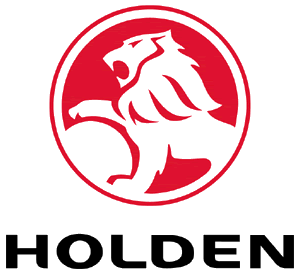
Holden is an Australian car manufacturer based in Melbourne. The company was established by James Alexander Holden, who emigrated to South Australia from England in 1852 and in 1856 established J.A Holden & Co, a saddlery (изготовление сёдел и упряжи) business in Adelaide. Later the company moved into the automotive field, becoming a subsidiary (дочерняя компания) of General Motors in 1931.
Agriculture
Agriculture in Australia a major industry, 402 000 people are employed in agriculture and agriculture-related services, and agriculture accounts for approximately 3% of Australia’s GDP.
Australia produces a wide variety of crops and livestock (крупный рогатый скот), 80% of all agricultural production is exported.
Major agricultural products
The top ten agricultural products in 2001-2002 by value in Australian dollars were:
1. Cattle and calves
2. Wheat
3. Milk
4. Barley
5. Lambs
6. Poultry meat (птица)
7. Wine grapes
8. Sugar cane (тростник)
9. Pigs
10. Rapeseed (рапс)
History of the European wild rabbit in Australia
